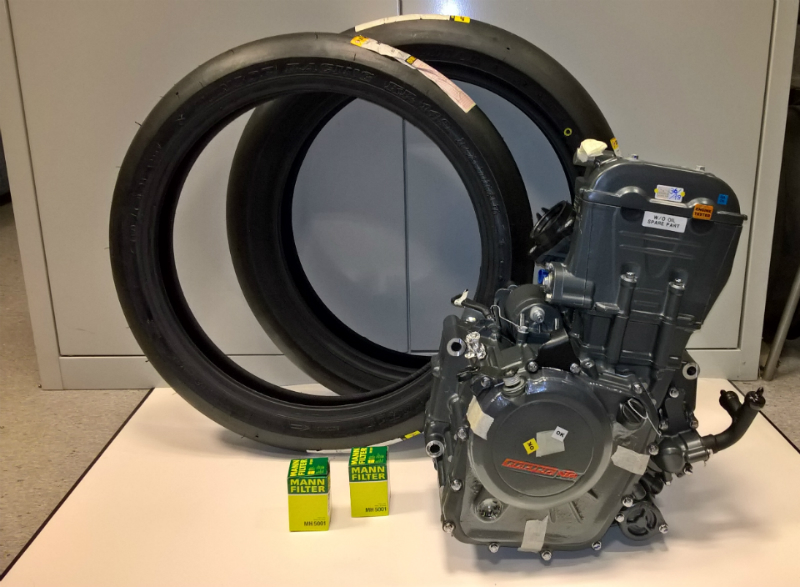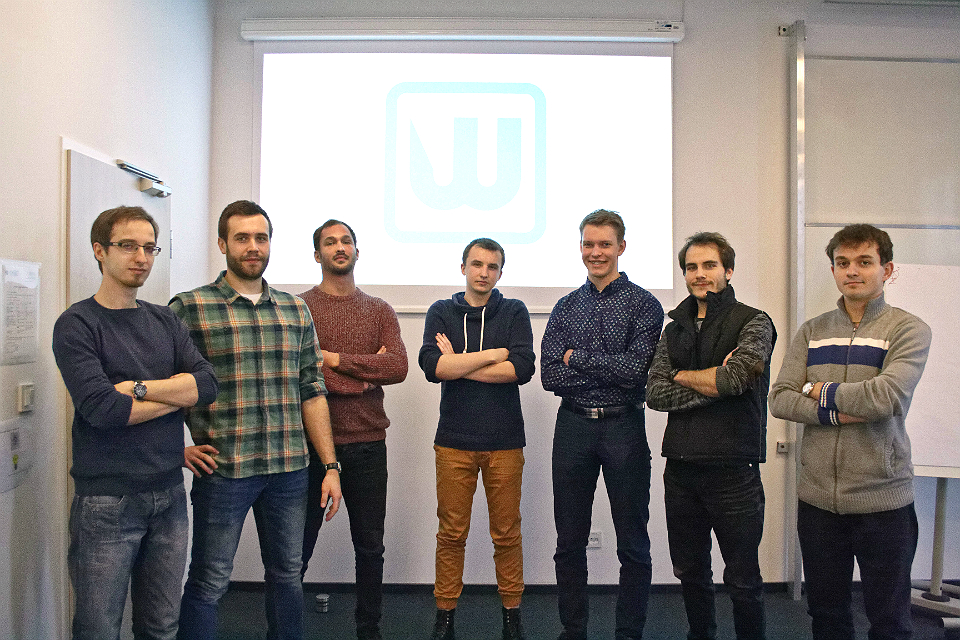Students are building a motorcycle for an international competition

When it comes to design, the WUT students cooperate with Mariusz Nadolny from the Academy of Fine Arts in Warsaw.
Business - Innovations – Technology
By day, they study mechanics and machine design at the Faculty of Automotive and Construction Machine Engineering at WUT. After classes, they work on a prototype of a preMoto3 motorcycle. They plan to enter it for the MotoStudent competition, which will be held in Spain in October. Our WUT SiMRacing Team will be the only Polish team among the participants.
Competition organizers provide all the teams with the same engine (a 250cc engine from the KTM RC250 road motorcycle), wheels, tires and a brake system. The teams have to design the rest and then build a motorcycle. According to the Rules and Regulations of the competition, the minimum weight of the motorcycle should be 95 kg.
From idea to implementation
How do you get around to working on such a project? “We started by developing a preliminary concept for the motorcycle: we defined its dimensions, the driver’s position, the chassis geometry, the suspension systems, lever systems,” says Jan Biniewicz, leader of the WUT SiMRacing Team. “In the following stage, we modeled all elements using CAD software. We made calculations to check the durability and we optimized the structure.”
Then the design has to be transferred to the real world, which simply means building the motorcycle. Some parts are manufactured by the students themselves, but other need to be ordered with external suppliers. The construction stage is scheduled to end by the end of July. This will give the team 2 to 2.5 months to test the vehicle. “The motorcycle will be tested on a track where we will be able to check the motorcycle in real-life conditions and adjust it for the specific tests that will take place during the competition,” Jan Biniewicz says.
These tests are divided into two categories: static and dynamic. The static category involves a presentation of the design and it's business aspects as if the motorcycle was to be introduced into serial production. Dynamic tests include braking performance, acceleration, maximum speed and maneuverability during a gymkhana. The most exciting test, however, is a 40-kilometer race on the full circuit of the MotorLand Aragón track, with the participating vehicles racing next to one another as in a professional motorcycle race.
The teams are awarded points for each test. The team with the highest total score wins.
Out of love for motorcycles
This year the MotoStudent competition is organized for the fifth time. 74 teams from 17 countries will participate. The WUT SimRacing Team has not participated in the event before, but it has ambitious plans. “We aim for the best debutant award and we also hope to get a high position in the final classification,” Jan Biniewicz says.
The team from the Warsaw University of Technology plans to stand out by using original solutions in their design. “We want to ensure a wide scope of chassis geometry adjustment so that our motorcycle can be fine-tuned for various tests,” Jan Biniewicz says. “We know that most teams use pre-manufactured motorcycle fairings; only a handful of teams design them, as we do, from scratch, according to our own concept, and then test them in terms of aerodynamics. What’s more, we want to make the entire rear frame from carbon composite, which is not a common solution, but I think it is a nice design feature.”
In their work on the motorcycle, the WUT students use the knowledge acquired at the University and experiences gained in WUT Racing, another student team building racing cars for the Formula Student competition.
The love for motorcycles and dreams of participating in prototype motorcycle racing events eventually turned our engineers’ attention to the MotoStudent competition. “We know one another from the University, we know who is best at what, so forming a team was not difficult,” Jan Biniewicz says.
A well-coordinated team is a must
The WUT SiMRacing Team is a section of the Vehicle Mechanic Student Research Group, which operates within the SiMR Faculty. The team is divided into sections. Patryk Adamczyk and Jakub Wirkus are responsible for the engine, while the work on the load-bearing structure and geometry is performed by Jan Biniewicz, Tomasz Nalewajko, Radosław Panasiewicz, Przemysław Pytlarczyk and Adrian Śledź. Electronics and telemetry are the responsibility of Jakub Wirkus. Jan Biniewicz and Mikołaj Kalinowski work on aerodynamics. Responsibility for ergonomics is shared by Karol Mech and Tomasz Mieczkowski. When it comes to design, the WUT students cooperate with Mariusz Nadolny from the Academy of Fine Arts in Warsaw, a finalist of a competition for the Polish car of the future, organized by ElectroMobility Poland, and the winner of the AutoKreator 2016 and 2017 competition, for which he designed a luxurious electric sports car.
What is the hardest part of the work? “Arranging all elements in a way that is consistent with the requirements we set ourselves when we started the project,” Jan Biniewicz says without hesitation. “The challenge is to plan the arrangement of the parts in such a confined space in such a way as to enable the assembly and disassembly of the structure and prevent interference of elements throughout the entire range of movement.”
Agnieszka Kapela
Promotion and Information Office








